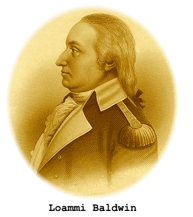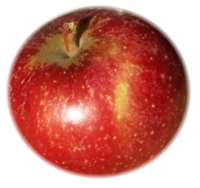Butter
Today’s surname is also a common word and another one which presents a research challenge, but with an interesting historical twist – the story of an apple. According to immigration passenger lists, people with the Butter surname, or some variation thereof, came from Ireland, England, Scotland and Germany. 1920 census records indicated a substantial number of the Butter family in Texas, as well as New York, Pennsylvania, Michigan and Tennessee.
The theories as to its origins are as follows:
Forbears: This web site notes that the surname Butter (or some variation of it, and there are many) is the 33,215th most common in the world. The highest incidences of the name today occur, surprisingly, in Nigeria, Germany and the Netherlands, with the United States ranked fourth. According to Forbears, the surname is a nickname: “the butur”; “Buture, the bittern”; “Botor, a bustard” (Source: Dictionary of English and Welsh Surnames). In 1273 the name John le Butur of Cambridgeshire was listed on the Hundred Rolls, as well as John Botere of Huntingsdonshire. In 1581 Richard Butter was on the rolls of the University of Oxford.
Internet Surname Database: This web site concurs with Forbears in regards to a nickname origin and elaborates a bit more. The nickname would be for someone having a certain vocal characteristic the call of a bittern, a wading bird in the heron family. Both the Middle English word “botor” and the Old French word “butor” both mean bittern. Another observation is an Old English word “butere” which meant “butter” and referred to an occupational name for a dairyman or someone who sold butter or ran a buttery.
House of Names: In Scotland the name was first seen among the Pictish clans and the family lived in Perth and Fife counties. One village was named “Buttergask” or “Buttercask” in the Ardoch parish.
ScotClans: Butter was the name of an old family in Perthshire. The name Adam Butir was recorded in 1331 and William Butyr and Patrick Butirr are found in 1360 records.
4Crests: The surname was as official name, meaning “at the buttery” or one who kept butter, or a store for liquor. Richard of the Bottery was mentioned in a 1399 record. John Butterey married Elizabeth Burnell in 1531, and a daughter of John Buttereye was baptized in 1669 in London.
Variations of this name include: Butter, Butters, Butterlaw, Butterwick, Butterworth, Butterton, Buttar, Buttars, Butere, Putter, Buttry, Batter, and many, many more.
 When did the Butter (or Butters) family make its way to America? According to The Genealogical Registry of the Butters Family, published in 1896, the name first appeared following the arrival of Scottish prisoners, referring to them as “romantic young followers of Charles II” who had been captured at Dunbar and Worcester by Cromwell and sent to the colonies as indentured servants.
When did the Butter (or Butters) family make its way to America? According to The Genealogical Registry of the Butters Family, published in 1896, the name first appeared following the arrival of Scottish prisoners, referring to them as “romantic young followers of Charles II” who had been captured at Dunbar and Worcester by Cromwell and sent to the colonies as indentured servants.
Tradition holds that in the early days of the Massachusetts Bay Colony, three Butter brothers came from Scotland: John, Isaac and William Butter. One was said to have gone off somewhere and never heard from again, and another was captured by Indians, and upon his escape returned to Scotland. The records for John and Isaac were so sparse that the nineteenth century family genealogists concluded that William Butter, who settled in Woburn, Massachusetts was likely the progenitor of their family in America.
The Butters Apple
According to the family history cited above, the area where William settled and many of his descendants remained for over two hundred years was an area known as “Butters Row District”, situated in a new town near Woburn called Wilmington. A map included in the Butter history book lists the following people who lived in the era continuously from 1665 to 1895:
William Butters
James Butters
Abiel Butters
Samuel Butters
John Butters
Lorenzo Butters
Walter Butters
Oliver Butters
Simeon Butters
In the same district was a school called the Butters Row School. In the middle of all of these Butters family members and their properties is a landmark simply called “Apple Tree.” Why would a map like this include a prominently marked “Apple Tree”. This particular apple tree was planted by William Butters (1711-1784) who was the grandson of William Butter, the immigrant. The tree had been transplanted from a neighboring farm in Wilmington.
The tree was situated near William’s house and as the tree grew it attracted a large number of birds, namely woodpeckers. The apple was first called the “Woodpecker” or “Pecker”, but also known as the “Butters Apple”. The tree flourished and produced fruit for a number of years before Deacon Samuel Thompson discovered it while surveying the Middlesex Canal.
Thompson mentioned his discovery to canal engineer Loammi Baldwin, who was so impressed with the apple that he visited the Butters farm and obtained his own cuttings for transplantation near his home in Woburn. He gave cuttings to friends and later the apple variety was named after him.
 Baldwin, a Revolutionary War veteran who crossed the Delaware with Washington, was a scientist and civil engineer, who also happened to be (appropriately) the second cousin of Johnny Appleseed. Baldwin apples were a hearty and flavorful variety used for making pies and hard apple cider. The bright-colored fruit is a winter apple and easily shipped. Harvested in October, they can be stored for several months.
Baldwin, a Revolutionary War veteran who crossed the Delaware with Washington, was a scientist and civil engineer, who also happened to be (appropriately) the second cousin of Johnny Appleseed. Baldwin apples were a hearty and flavorful variety used for making pies and hard apple cider. The bright-colored fruit is a winter apple and easily shipped. Harvested in October, they can be stored for several months.
 The Baldwin became the most popular apple grown in New England. In 1833 the New American Orchardist noted that “no apple in the vicinity of Boston is so popular as this, at the present day.” By the mid-nineteenth century the apple was seen in other states like New York and Pennsylvania.
The Baldwin became the most popular apple grown in New England. In 1833 the New American Orchardist noted that “no apple in the vicinity of Boston is so popular as this, at the present day.” By the mid-nineteenth century the apple was seen in other states like New York and Pennsylvania.
 In 1895 the Rumford Historical Society erected a monument to the Baldwin apple near its original location in Wilmington. The inscription reads:
In 1895 the Rumford Historical Society erected a monument to the Baldwin apple near its original location in Wilmington. The inscription reads:
This monument marks the site of the first Baldwin Apple Tree found growing wild near here. It fell in the gale of 1815. The apple first known as the Butters, Woodpecker or Pecker apple was named after Col. Loammi Baldwin of Woburn. Erected in 1895 by the Rumford Historical Association.
The popularity of the Baldwin declined in the early twentieth century, however, with the introduction of the Jonathan variety. In 1934 a devastatingly cold winter in the northeast destroyed several orchards across New England. Though not as popular today, it’s still considered a good cider apple.
 Did you enjoy this article? Yes? Check out Digging History Magazine. Since January 2018 new articles are published in a digital magazine (PDF) available by individual issue purchase or subscription (with three options). Most issues run between 70-85 pages, filled with articles of interest to history-lovers and genealogists — it’s all history, right? 🙂 No ads — just carefully-researched, well-written stories, complete with footnotes and sources.
Did you enjoy this article? Yes? Check out Digging History Magazine. Since January 2018 new articles are published in a digital magazine (PDF) available by individual issue purchase or subscription (with three options). Most issues run between 70-85 pages, filled with articles of interest to history-lovers and genealogists — it’s all history, right? 🙂 No ads — just carefully-researched, well-written stories, complete with footnotes and sources.
Want to know more or try out a free issue? You can download either (or both) of the January-February 2019 and March-April 2019 issues here: https://digging-history.com/free-samples/
Thanks for stopping by!